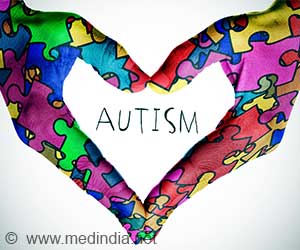International Women’s Day is on March 8 and is the time to step up for accelerating gender equality by changing attitudes among people.

TOP INSIGHT
Let's strive for ending gender discrimination and violence on women by raising our voice and support on this International Women’s day.
“Step It Up” asks governments to make national commitments that will close the gender equality gap – from laws and policies to national action plans and adequate investment.
International Women’s Day Celebration in India
In India, International Women’s Day is celebrated by the people with great zeal and passion to increase the awareness about women’s rights. This event plays an important role in getting the real message of women’s right to the society. It promotes better living conditions for women by finding ways to deal with their social issues.Gender Equality
Gender equality is among the list of 17 Global Goals that make up the 2030 Agenda for Sustainable Development. The United Nation framed the ‘Millennium Project’ to achieve the Millennium Developmental Goals (MDGs) with a deadline of 2015. The goals include:- Eradicate Extreme Poverty and Hunger
- Achieve Universal Primary Education
- Promote Gender Equality and Empower Women
- Reduce Child Mortality
- Improve Maternal Health
- Combat HIV/AIDS, Malaria and Other Diseases
- Ensure Environmental Sustainability
- Develop a Global Partnership for Development
UN data shows that two-thirds of countries have achieved gender parity in primary education around the world. Also, the proportion of paid jobs and parliamentary seats continue to increase substantially in many developing and under developing countries. The average percentage of women in parliament rose from 11 percent in 1995 to 22 percent in January 2015 globally.
In 2015, one of the major developments in gender parity noticed was the ‘Historic Election in Saudi Arabia’ where women voted for the first time. In 2014, Malala Youzifsai won the Nobel Peace Prize for Children's Right to Education. She became a symbol of courage for girls to stand up for their educational rights.
But still, many women are facing poverty, malnutrition, maternal mortality, poor healthcare facilities, violence, illiteracy and unemployment. Globally, 1 in 3 girls suffer physical or sexual abuse. 143 countries guaranteed equal parliamentary seats, but 52 still have not taken a step and still millions of women face female genital mutilation in the African and the Middle Eastern countries.
The theme “Planet 50-50 by 2030: Step It Up for Gender Equality.”
The idea of this theme is to accelerate the 2030 Agenda, building momentum for effective implementation of the new Sustainable Development Goals.Its key target areas are:
- To educate all girls and boys with quality primary and secondary education by 2030
- To have access to quality early childhood development, care and preprimary education for all children by 2030
- To end all forms of discrimination against women and girls
- To eliminate all forms of violence against women and girls, including trafficking and sexual exploitation
- To combat child marriage and female genital mutilation
Help Achieve Gender Parity
Women and girls comprise more than half of the global population. They contribute to the society, every day in many visible and invisible ways as teachers, farmers, businesswomen, politicians, mothers, law enforcers among others. It’s time to take initiative to give them equal rights and stop violence against women. Women’s growth is vital in enriching economic, social and political achievements. Therefore, every man and woman need to pledge to take a firm step to help achieve gender parity. Each of us can be a leader within our own spheres of influence and commit to take pragmatic action to accelerate gender parity. Globally, with individuals pledging to move from talk to purposeful action, we can collectively help women advance equal to their numbers and realize the limitless potential they offer economies the world over.No, just by recognizing women in your society, workplace and at home can help achieve gender parity much sooner than estimated. It’s not only women, but also men must come forward to help in the advancement of women in every aspect. Pledge to end gender discrimination by taking these simple steps:
- Appreciate your mother, wife, daughter, sister, cousins, friends for their timely care and support
- Recognize female workers in your company and give them a chance to upgrade themselves
- Offer leadership roles to women and delve in your firm’s growth
- Protect every women in the community, no matter they are related or not
- Fight and raise voice against violence on women
- End gender determination and female genital mutilation
- Eradicate bias on women by building supportive environments
- Educate girls and offer equal opportunities at educational institutions
- Improve maternal care centers with quality diagnosis and treatment facilities
- Raise awareness about sexually-transmitted diseases to halt their spread
- Increase proportion of parliamentary seats for women
References:
1. http://www.unwomen.org/
2. http://www.un.org/
3. http://www.unicef.org/mdg/gender.html
4. http://www.undp.org/
5. http://www.unmillenniumproject.org/
6. https://en.wikipedia.org/wiki/International_Women%27s_Day
Source-Medindia
 MEDINDIA
MEDINDIA




 Email
Email




